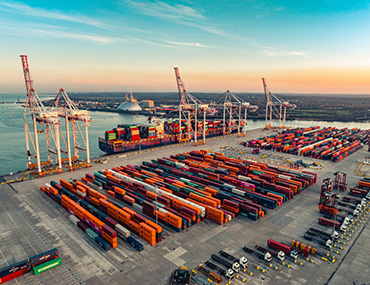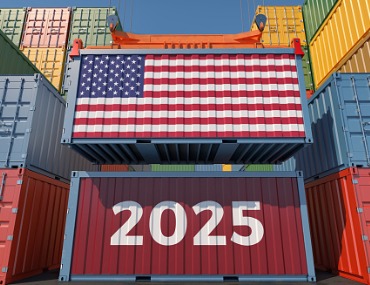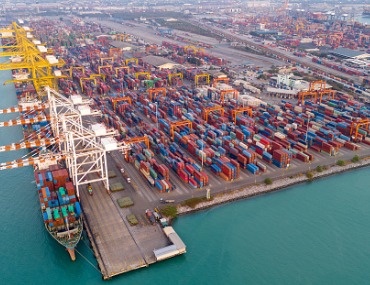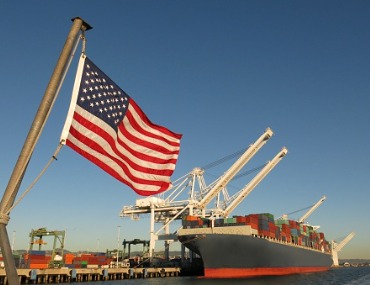

Trade
November 19, 2025
Fractured Supply Chains & U.S. Contingency Planning: Rare Earth Minerals
The threat of China curtailing exports of rare earth minerals has been on the radar of policymakers in D.C. for the better part of a decade, but China’s monopoly over the industry limited the pool of viable alternatives. Now in 2025, as trade relations between the world’s two largest economies have deteriorated, China has opted to apply strategic pressure to a vital nerve in global supply chains.
November 05, 2025
Global Trade Disrupted: Early Impacts of U.S. Tariffs
The dramatic increase in U.S. tariffs in 2025 has led to volatility in the trade data that makes it difficult to analyze trends. Despite these distortions, there is early evidence that underlying growth in U.S. imports has slowed.
September 09, 2025
Economists’ Almanac Predicting Another Warm Year for U.S. Inflation
Higher tariffs have been slow to materialize in U.S. consumer prices. The stop-and-start rollout of trade policies, inventory stockpiling and a substitution away from highly tariffed Chinese goods have helped to mitigate the impact on goods inflation. However, these forces will play less of a role moving forward.
May 28, 2025
North American Auto Outlook 2025: Trade Headwinds to Stall Industry
At the start of 2025, the automotive industry was looking forward to another year of healthy sales growth, aided by affordability improvements from lower financing costs and continued solid gains in real household income. However, less than halfway through the year we have seen several aggressive trade policies announced by the new U.S. administration which are expected to weigh on the outlook over the coming years.
April 16, 2025
Tariff Policy and Whiplash Weaken U.S. Growth Outlook
The U.S. administration imposed a 90-day pause on reciprocal tariffs, dropping all countries (excluding China) to a flat 10% tariff. This comes in addition to the sectoral tariffs, including steel & aluminum and finished autos & parts. We estimate the effective tariff rate in the U.S. to be 26%, the highest level in over a century. However, this is skewed by the outsized 145% tariff on China.
April 02, 2025
U.S. Liberation Day Binds The World To High Tariffs
The U.S. administration announced broad reciprocal tariffs today, targeting all trading partners, and not just the countries that run large trade surpluses with the U.S. The tariffs will be implemented under the International Emergency Economic Powers Act (IEEPA) of 1977.
March 27, 2025
U.S. Tariffs on Automobiles Announced
President Trump announced that on April 3rd, the U.S. will place 25% tariffs on all imported passenger cars and light trucks. However, imported vehicles from Canada and Mexico that are compliant with the USMCA will face the 25% tariff only on the value of content produced outside of the U.S.
February 13, 2025
U.S. East Coast Trade Exposure: Less is More When Tariffs Hang in the Balance
Canada, Mexico, China and the EU are America’s top trading partners. The potential for tariffs raises uncertainty for many industries along the East Coast. The impact of tariffs will not be borne equally by all states.
February 12, 2025
Update on U.S. Steel and Aluminum Tariffs
The White House has announced the restoration of Section 232 Tariffs on Steel and Aluminum that were originally imposed in 2018. The rate on steel will return to the 25% implemented in 2018, while the rate on aluminum will rise to 25%, from 10% previously.
January 28, 2025
Potential Hazards Ahead: Trade Risks in the North American Automotive Industry
The automotive industry accounts for over 10% of intraregional trade in North America, equating to hundreds of billions of dollars in cross-border trade flows and millions of jobs. Proposed blanket tariffs of 25% on Canada and Mexico, if retaliated against in equal measure, would likely result in a material contraction in vehicle sales in all three North American nations as price increases would ripple through supply chains.
January 21, 2025
Canada-U.S. Trade Relationship Infographic
Infographic that explores the strong trade relationship between Canada and the United States. Canada is the largest export market for the U.S., while maintaining a small trade deficit. Additionally, Canada is a net importer of $5 billion in U.S. automotive products, highlighting the deep economic ties between the two nations.
January 21, 2025
Setting the Record Straight on Canada-U.S. Trade
In addition to border security concerns, Trump has argued that “the United States can no longer suffer the massive trade deficits that Canada needs to stay afloat,” claiming that the U.S. subsidizes Canada to the tune of US$200 billion annually. How “massive” is the deficit and is there validity to this claim of subsidization?
November 06, 2024
Markets Brace For Higher Inflation and Interest Rates Under President Trump
As of 11 AM ET, Donald Trump has secured 277 of the 538 Electoral College votes, becoming the 47th president. While ballots are still being counted, President Trump also looks to have won the popular vote, which has not happened for a Republican president since George W. Bush in 2004.
October 22, 2024
U.S. Trade Vulnerabilities in Critical Minerals: Pressure Points Amid Rising Tensions
In 2022, the U.S. designated 50 minerals as critical to the economy and national security. These minerals are used in countless products including automobiles, energy systems, electronics, and military equipment. China dominates the global production of more than half of the critical minerals outlined by the U.S. government, which it has leveraged over the past year amid rising trade tensions between the two nations.
October 02, 2024
U.S. Dockworker Strike (October 2024)
Thousands of dockworkers at several East and Gulf coast ports are on strike. Combined with other disruptions – i.e., Hurricane Helene and striking Boeing workers on the Pacific Northwest – these one-off events are poised to take some wind out of the economy's sails in the fourth quarter.
September 13, 2024
U.S. 2024 Election: Economic and Financial Implications
Elections matter for the economy, but financial markets are likely to be particularly attuned to the current election cycle given America’s unsustainable fiscal trajectory. The make-up of Congress will determine how much of the future President’s agenda can be implemented. A divided Congress will likely force the next President to make significant concessions relative to their current platform proposals.



















